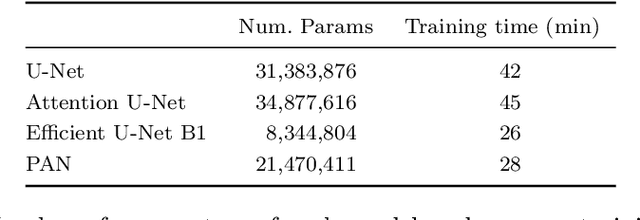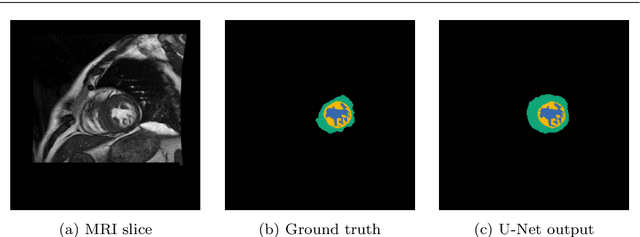Gregorio Bernabé
Expanding the deep-learning model to diagnosis LVNC: Limitations and trade-offs
Nov 23, 2023Abstract:Hyper-trabeculation or non-compaction in the left ventricle of the myocardium (LVNC) is a recently classified form of cardiomyopathy. Several methods have been proposed to quantify the trabeculae accurately in the left ventricle, but there is no general agreement in the medical community to use a particular approach. In previous work, we proposed DL-LVTQ, a deep learning approach for left ventricular trabecular quantification based on a U-Net CNN architecture. DL-LVTQ was an automatic diagnosis tool developed from a dataset of patients with the same cardiomyopathy (hypertrophic cardiomyopathy). In this work, we have extended and adapted DL-LVTQ to cope with patients with different cardiomyopathies. The dataset consists of up 379 patients in three groups with different particularities and cardiomyopathies. Patient images were taken from different scanners and hospitals. We have modified and adapted the U-Net convolutional neural network to account for the different particularities of a heterogeneous group of patients with various unclassifiable or mixed and inherited cardiomyopathies. The inclusion of new groups of patients has increased the accuracy, specificity and kappa values while maintaining the sensitivity of the automatic deep learning method proposed. Therefore, a better-prepared diagnosis tool is ready for various cardiomyopathies with different characteristics. Cardiologists have considered that 98.9% of the evaluated outputs are verified clinically for diagnosis. Therefore, the high precision to segment the different cardiac structures allows us to make a robust diagnostic system objective and faster, decreasing human error and time spent.
Code Detection for Hardware Acceleration Using Large Language Models
Jul 19, 2023



Abstract:Large language models (LLMs) have been massively applied to many tasks, often surpassing state-of-the-art approaches. While their effectiveness in code generation has been extensively studied (e.g., AlphaCode), their potential for code detection remains unexplored. This work presents the first analysis of code detection using LLMs. Our study examines essential kernels, including matrix multiplication, convolution, and fast-fourier transform, implemented in C/C++. We propose both a preliminary, naive prompt and a novel prompting strategy for code detection. Results reveal that conventional prompting achieves great precision but poor accuracy (68.8%, 22.3%, and 79.2% for GEMM, convolution, and FFT, respectively) due to a high number of false positives. Our novel prompting strategy substantially reduces false positives, resulting in excellent overall accuracy (91.1%, 97.9%, and 99.7%, respectively). These results pose a considerable challenge to existing state-of-the-art code detection methods.
Deep learning approach to left ventricular non-compaction measurement
Nov 30, 2020



Abstract:Left ventricular non-compaction (LVNC) is a rare cardiomyopathy characterized by abnormal trabeculations in the left ventricle cavity. Although traditional computer vision approaches exist for LVNC diagnosis, deep learning-based tools could not be found in the literature. In this paper, a first approach using convolutional neural networks (CNNs) is presented. Four CNNs are trained to automatically segment the compacted and trabecular areas of the left ventricle for a population of patients diagnosed with Hypertrophic cardiomyopathy. Inference results confirm that deep learning-based approaches can achieve excellent results in the diagnosis and measurement of LVNC. The two best CNNs (U-Net and Efficient U-Net B1) perform image segmentation in less than 0.2 s on a CPU and in less than 0.01 s on a GPU. Additionally, a subjective evaluation of the output images with the identified zones is performed by expert cardiologists, with a perfect visual agreement for all the slices, outperforming already existing automatic tools.
 Add to Chrome
Add to Chrome Add to Firefox
Add to Firefox Add to Edge
Add to Edge